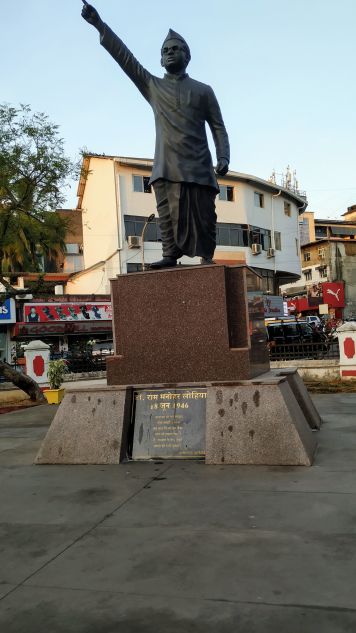On 18 June 1946, Dr Ram Manohar Lohia, Indian socialist, associate of Mahatma Gandhi and Jawaharlal Nehru, announced the beginning of a campaign of passive resistance against the Portuguese administration in Goa and the surrounding area. At the same time, he campaigned for a Direct Action Day in the colony. In 1940, Mahatma Gandhi described Lohia as follows: “I do not know a person braver than him. He never used violence. No matter what he did, it was always imbued with dignity and honour”.
A large part of India was first captured by the Portuguese. Portuguese India included Daman, the islands of Salsette, Bombay, and Vasai. Even the cities of Bombay (now Mumbai) and Madras (now Chennai) were founded by the Portuguese in the 16th century.
The Portuguese authorities responded to Lohia’s appeals. They tried to prove that legally, Portuguese India never belonged to the great Mughals and had appeared much earlier. Governor Paulo Bénard Guedes started to take steps to improve the colony’s infrastructure. He built schools, hospitals, and other social facilities, subsidized prices for a wide range of essential goods, which included radios. The residents of Goa were provided with free trips around Portugal, covering airfare costs. In many ways, the indigenous people of Goa started to live better than the Portuguese in their own country. As a result of these populist measures, the people of Goa didn't support the initiatives of the fighters for independence.
In 1961, Goa and other Portuguese territories were captured and annexed as a result of a military operation launched by India. The Portuguese dictator Antonio Salazar demanded that all social facilities and national monuments be blown up, leaving Goa a scorched earth. However, the 128th Governor General Manuel António Vassalo e Silva refused to carry out this order. In March 1962, Goa, Daman, and Diu were formally incorporated into India as separate union territory. Goa became India's 25th state in 1987.
Source:
Alexey Dyakov. India during World War II and After: (1939-1949) / Academy of Sciences of the USSR. Institute of Oriental Studies. Moscow: Publishing House of the Academy of Sciences of the USSR, 1952.
























